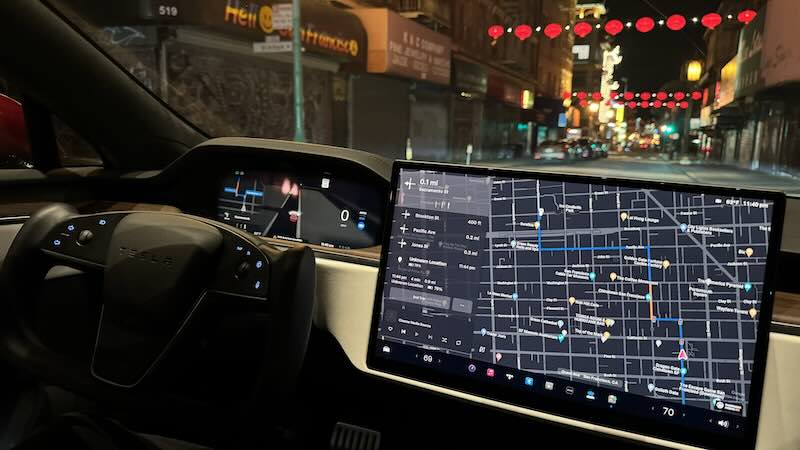With each new iteration of Tesla’s FSD, Elon Musk inches closer to delivering on his bombastic promise of fleets of autonomous Robotaxis roaming city streets, latest FSD Beta 12.3 update is no exception, showcasing substantial strides in key areas according to early reviews—but also highlighting just how many hurdles still stand between the current state of play and a level 5 driverless dream.
According to Douma, the degree to which FSD V12 accurately mimics human driving behaviors is “startling.” Tesla’s ability to capture the good habits while leaving the bad ones behind has exceeded even his lofty expectations for such an early release.
Renowned Tesla watcher and automotive blogger WholeMarsBlog took FSD Beta 12.3 for a spin around the streets of San Francisco today. Their takeaway? An impressive showing overall, with plenty of flawless short trips interspersed with occasional disengagements requiring human intervention.
Particular praise was heaped upon the update’s supremely “smooth” acceleration, braking, and general driving dynamics—with WholeMarsBlog positing that aspects like highway lane changes and merges may have even exceeded their own abilities behind the wheel. High marks indeed for a system still very much in active beta development.
However, the drive wasn’t without its hiccups. WholeMarsBlog noted several instances of the system struggling to properly interpret flashing red lights or unusual traffic signals, often resulting in confused “rocking” motions as the AI grappled with the ambiguity. A couple of too-close calls with barriers and other hazards prompted manual takeovers as well.
While enthusiastic about FSD Beta 12.3 clear strides, longtime Tesla observer The Kilowatts cautioned that sustained, consistent progress without regressions will be key to manifesting the long-promised robotaxi service. Solving tricky edge cases is the “holy grail,” and anecdotes alone aren’t enough to predict viable timelines just yet.
It’s a level-headed take illustrating just how difficult it can be to wring out the last vestiges of human-like performance from AI systems—especially those tasked with mission-critical driving decisions in unpredictable environments. We’re certainly getting closer, but true, unfettered autonomy at a commercial scale remains an elusive finish line for now.
Perhaps the next update or two will cross that threshold and bring Tesla’s robotaxi ambitions to full fruition. Until then, humans will have to keep one hand poised over that steering wheel, ready to assist in a split second if the AI brains still get a bit scrambled. Call it the ultimate form of driving aid, if not quite the driverless revolution Musk envisioned.
